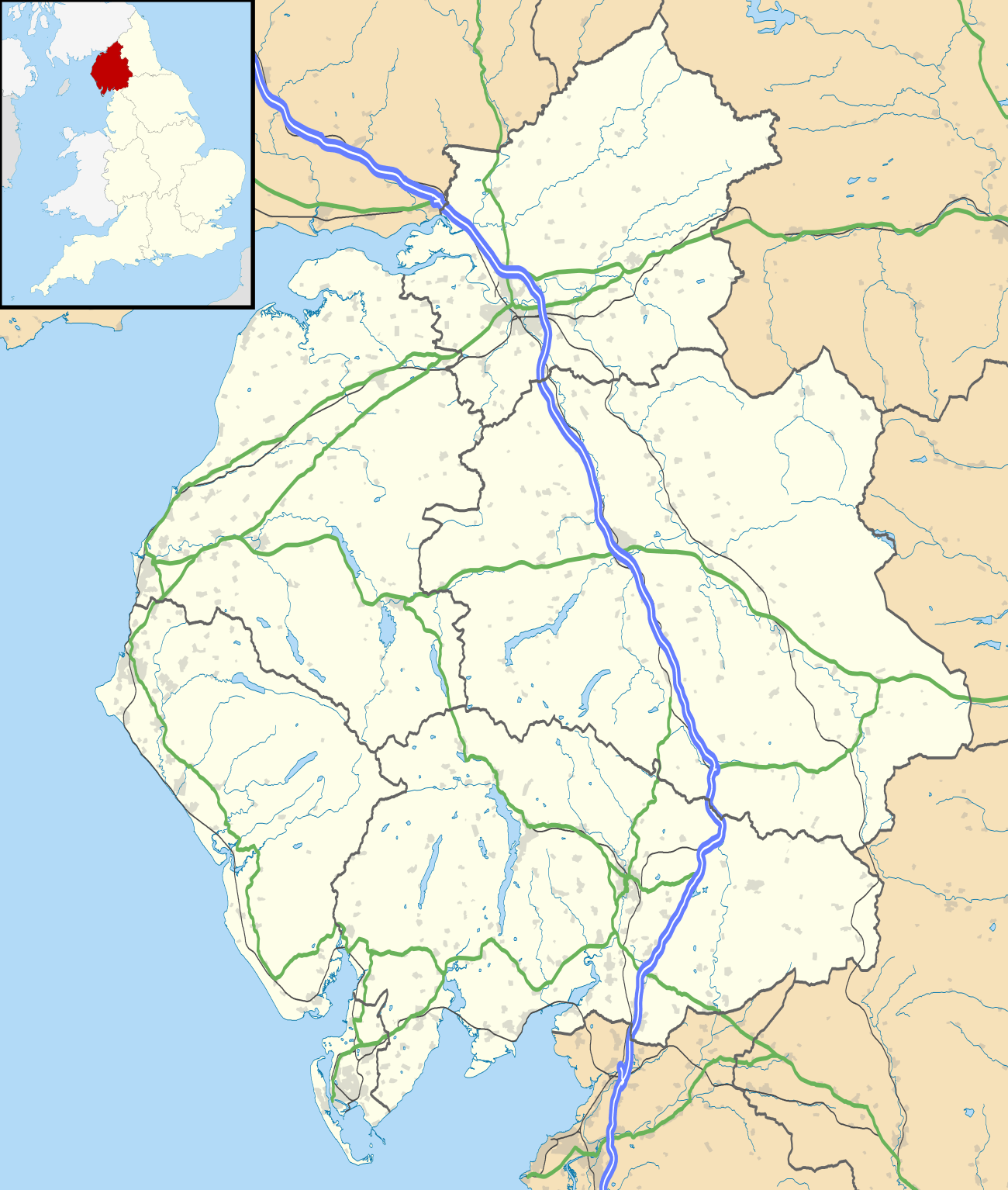Scaleby Castle
Scaleby Castle is in the village of Scaleby, Cumbria. The castle was originally built in the early 14th century, and extended in the 15th century to form a substantial fortification. Parliamentary troops attacked the castle twice during the English Civil War, burning it. It was later restored to form a country house.
| Scaleby Castle | |
|---|---|
| Scaleby, Cumbria, England | |
 Aerial photograph of Scaleby Castle | |
 Scaleby Castle | |
| Coordinates | 54.9532°N 2.8619°W |
| Grid reference | grid reference NY449624 |
| Site information | |
| Owner | Private |
| Site history | |
| Materials | Stone |
| Events | English Civil War |
Details
Robert de Tilliol built Scaleby Castle after 1307, next to the village of Scaleby, 6 miles (9.7 km) from Carlisle.[1] The Tilliols were a well-established family in the region from the reign of Henry I onwards, and Robert was given the land for the castle by Edward I and granted the authority to build a castle by Edward II.[2] The initial castle comprised two sets of buildings, linked by a small courtyard and protected by a curtain wall on both sides, surrounded by a large, circular, water-filled moat approximately 7.4 metres (24 ft) wide, and an inner moat, since largely destroyed.[3]
The male Tilliol line died out in 1435; the castle then passed by marriage to the Colville family.[4] They rebuilt much of the castle in the late 15th century, including remodelling the pele tower, the great hall and the gateway, complete with a polygonal barbican.[5] The pele tower formed a substantial fortification, about 40 feet (12 m) by 30 feet (9.1 m) across, with three floors and thick walls.[6] The Musgrave family acquired the castle and Sir Edward Musgrave rebuilt the south range of the castle in 1596.[7]
In 1641, the English Civil War broke out between the Royalist supporters of Charles I and Parliament. Sir Edward's grandson, another Sir Edward Musgrave, was a strong Royalist supporter and declared for the king.[8] In February 1645, Parliamentary forces besieging nearby Carlisle also besieged and eventually seized Scaleby Castle, causing considerable damage; Edward recovered the castle, but in at the start of the Second English Civil War in 1648 he again took up arms on behalf of the king.[9] This time the castle immediately fell to Parliamentary forces, who set fire to it.[10]
Sir Edward was heavily in debt so he sold the castle after the war to Richard Gilpin, who restored the property c. 1800.[11][12] The property remained in the hand of the Gilpins until it fell into disrepair; it was restored once again by Rowland Fawcett. In 1847 James Fawcett was resident there.[13][14]
Today the castle is a grade I listed building and a scheduled monument.[15] It is the seat of Oliver Eden, 8th Baron Henley.
See also
References
- Pettifer, p.47.
- Taylor, p.344.
- Pettifer, p.47; Scaleby Castle, National Monuments Record, accessed 5 April 2012.
- Taylor, p.344.
- Pettifer, p.47.
- Taylor, p.345.
- Taylor, p.344; Pettifer, p.47.
- Mackenzie, p.331.
- Mackenzie, p.331.
- Mackenzie, p.331.
- "Scaleby Castle". Gatehouse Gazetteer. Retrieved 11 March 2015.
- Mackenzie, p.332.
- Mackenzie, p.332; Taylor, p.344.
- "Images Of Cumbria - Scaleby Parish". www.stevebulman.f9.co.uk.
- Scaleby Castle, National Monuments Record, accessed 5 April 2012.
Bibliography
| Wikimedia Commons has media related to Scaleby Castle. |
- Mackenzie, James D. (1896). The Castles of England: Their Story and Structure, Vol II. New York: Macmillan. OCLC 504892038.
mackenzie story and structure.
- Pettifer, Adrian (2002). English Castles: A Guide by Counties. Woodbridge, UK: Boydell Press. ISBN 9780851157825.
- Taylor, Michael Waistell (1892). Old Manorial Halls of Westmorland and Cumberland. Kendal, UK: T. Wilson.